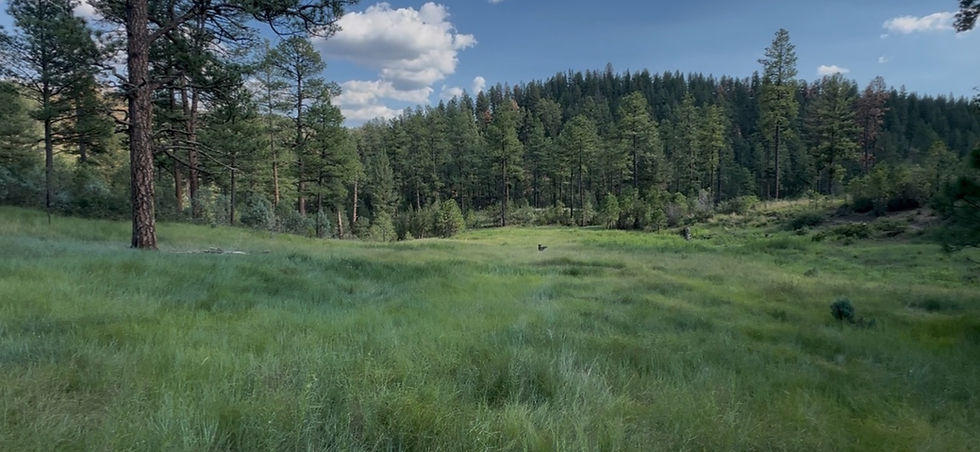Learning to Live with Wildfire
- Courtney Columbus

- Sep 2
- 3 min read

Wildfire season has grown longer in recent years, and much of the western U.S. has been affected by prolonged drought. To protect homes and manage forests sustainably, farmers and forest landowners can take practical steps to reduce risk. For example, fuel breaks and firebreaks—both NRCS Conservation Practices—can slow or stop the spread of wildfires.
Fuel breaks work by reducing the amount of burnable material. Clearing debris from the ground and pruning trees are effective strategies. Firebreaks, which are often combined with fuel breaks, involve creating strips of land where vegetation is removed. According to NRCS, planting fire-resistant vegetation can also strengthen a firebreak.
For more information about implementing Fuel Breaks and Firebreaks, contact us at
info@asekia.org or reach out to your local NRCS office.
Fire-Adapted Communities New Mexico
The Fire Adapted New Mexico Learning Network (FAC NM) helps communities increase resilience to wildfire by recognizing fire as a natural part of local ecosystems and taking steps to adapt. Watch the video below to learn more about this network and how to protect homes from wildfire:
Hispanic Forest Landowners Spotlight: Finca La Tomatera
When Carlos Maysonet Negrón and Carmen M. Acevedo started Finca La Tomatera as a retirement project, some of their friends commented that farming was for young people. But the energetic pair of retired university educators is proving day by day that people of all ages can reap the benefits of farming and plant trees that will nourish future generations.
Finca La Tomatera’s Focus Areas
Agricultural production
Education through interactive workshops
Ecotourism
Motivated by a desire to improve food security in Puerto Rico, which imports most of its food, Carlos and Carmen cultivate coconut, plantain, bananas, and other crops, in addition to fruits such as lime and guava.

“Maybe, because of our age, we won't see the fruits of many of these little trees we're planting. But I'm sure those who come to occupy this space will enjoy them,” Carmen says, adding that their children and grandchildren love to visit and help with the farm.
They recently planted 35 coconut trees, which can take anywhere from five to 20 years to produce fruit, Carlos says.
“We planted them with the hope that if we can't harvest the coconuts because we're no longer here...our grandchildren, neighbors, and the community can come and eat the coconuts we planted. The same goes for all the trees,” he explains.
Additionally, connecting with the land can be healing, Carmen adds.
“Working the land is therapeutic,” she says, whether at a farm or in a backyard. “I encourage older adults to always plant their own seedlings.”

Resilience
Finca La Tomatera is located in an area prone to flooding during periods of intense rain, such as those brought by Hurricane María in 2017 and Hurricane Fiona in 2022. At times, floodwaters have risen as high as two feet, Carlos recalls. When flooding occurs, they wait for the waters to recede and then continue working.
To reduce the impact of heavy storms, Carlos and Carmen have created a system of ditches to help manage rainfall runoff.
Education & Ecotourism

Carlos and Carmen are active participants in Asekia’s Hispanic Forest Landowners Outreach Program in Puerto Rico. Last year, they hosted our ecotourism workshop and also joined several others, including sessions on pollinators and bat conservation.
As part of their educational mission, they host events such as yoga classes and other workshops. They also sell products like locally raised eggs and medicinal plants. The farm has welcomed students completing Puerto Rico’s required “green hours”—outdoor educational activities designed to build environmental awareness.
Coming Soon
Throughout this month, we’ll be sharing tips on our social media accounts about how farmers and forest landowners can support bird conservation through land management practices. Follow along at the links below!



Comments